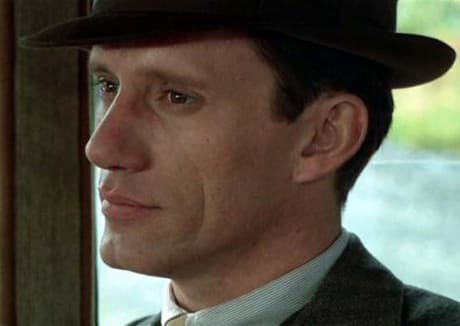Arguably an opium-inspired fantasy highlighting and referencing every notable gangster movie and significant American narrative of the early 20th Century, Sergio Leone's final film, a four-hour epic poem of monumental detail and intricacy, manages to maintain its mystique and ambiguity nearly 30 years later despite assessment and deconstruction from nearly every analytical critic and film academic out there. Once Upon a Time in America is a calculated work – notably assembled frame-by-frame in Sergio Leone's head long before shooting – having double-meanings, cultural minutiae and observable propinquity in relation to observable American ideology in developing industrial urban centres; in this case, New York City. As the story progresses, jumping between the 1920s, '30s and '60s, unfolding thematically rather than linearly, geography, politics and industry influence the reaction and motivations of lifetime Lower East Side pals and hoodlums Noodles (Robert De Niro) and Max (James Woods). Their callous greed and gradual corruption are mirrored by the foreboding, stark architecture of a developing, opportunistic nation where capitalistic fervour inspires surreptitious conspiracy in the name of success and being self-sustaining. An early scene captures this perfectly when a young member of Noodles' gang buys a cupcake, which he plans to exchange for sex with a local girl, only to poke and eventually eat it before he gets a chance to make his proposition. It is such an environment – of obtainable entitlement and instant gratification – that it ultimately creates a divergence between these friends, sending a disillusioned Noodles on a humbler, albeit more sociopathic, journey than Max, whose aspirations and vanity channel a Great Gatsby-like coldness. Leone's vision is conscious of spatial arrangement and framing as a proponent of theme. He uses shadows and eye-line matches to reveal desires and motivation without undue exposition, noting consciousness of audience response with a pan flute score that disappears in the third act when we see a character on screen making diegetic what was previously not. In an achievement so rich in texture and intention, it's nearly impossible not to find something new and exciting on each repeat viewing. And if there is one severe fault to this sprawling gangster tale, it is that rape is used as character-shaping crutch for the two leading men, with Noodles raping Elizabeth McGovern and Tuesday Weld to exercise power over something out of his control, while Max later romances both women to show his male superiority. If these women were developed into actual characters rather than pretty, passive sex things, this would come off as less misogynistic and vile, but alas, women weren't considered actual people in film at the time. Along with a clear, technically proficient hi-def image, the Blu-Ray includes an excerpt from the documentary Once Upon a Time: Sergio Leone, which details the making of the film, as well as a commentary track from critic/historian Richard Schickel for everyone that wants to bore themselves to death.
(Warner)Once Upon a Time in America
Sergio Leone

BY Robert BellPublished Jan 25, 2011